 Yay for spring! We did some ice skating and sledding on our tundra toward the beginning of the week. Later in the week we were so excited when we got outside and discovered some lovely puddles that were just right for scooping up snowy water with birdseed, and muddy water with chunks of ice. We chiseled out a ditch for drainage and filled our buckets and sleds with water and slush. A Friday snowfall was just right for rolling enormous snowballs, which were much too big to stack!
Yay for spring! We did some ice skating and sledding on our tundra toward the beginning of the week. Later in the week we were so excited when we got outside and discovered some lovely puddles that were just right for scooping up snowy water with birdseed, and muddy water with chunks of ice. We chiseled out a ditch for drainage and filled our buckets and sleds with water and slush. A Friday snowfall was just right for rolling enormous snowballs, which were much too big to stack!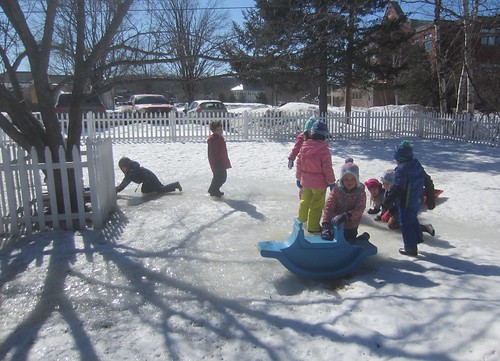
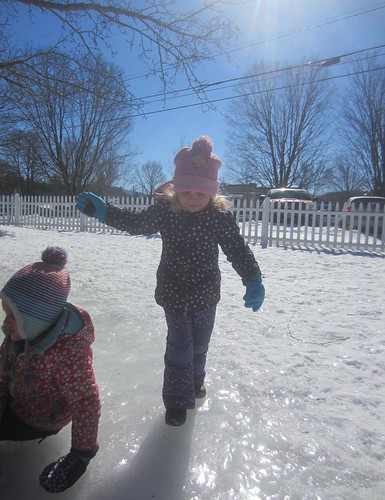
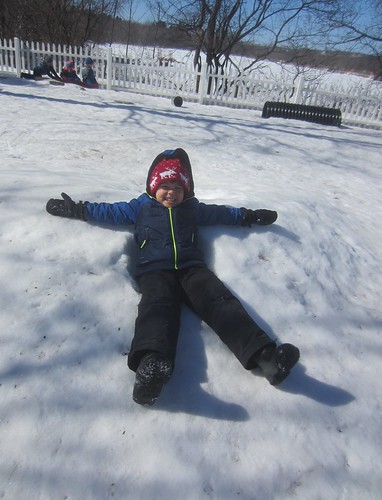
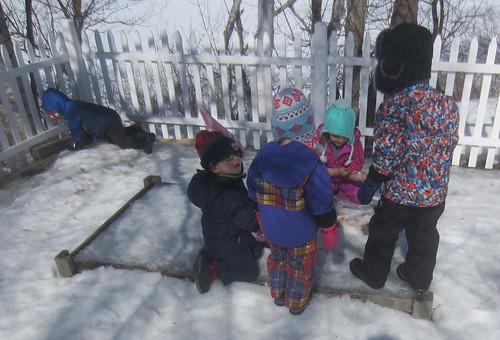
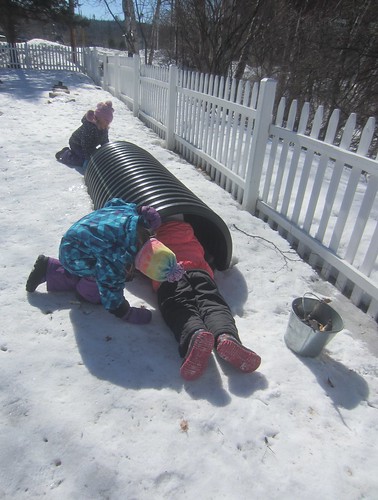
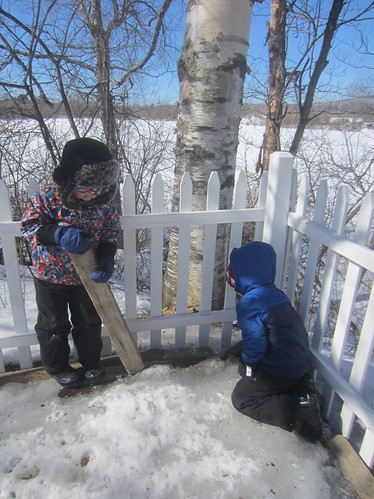
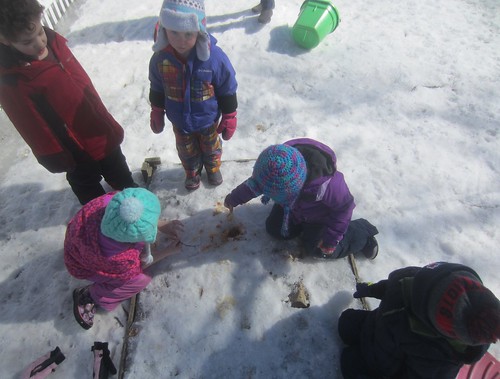
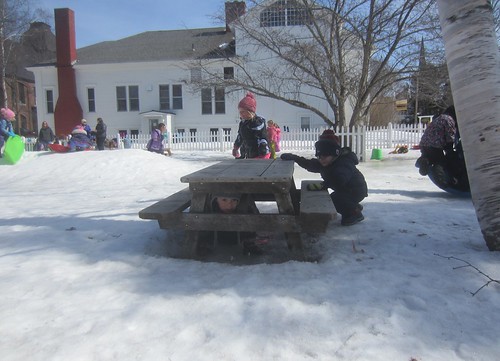
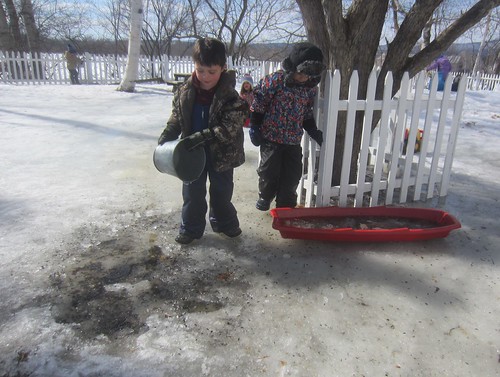
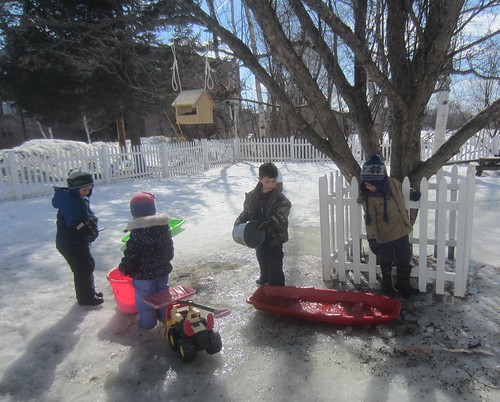
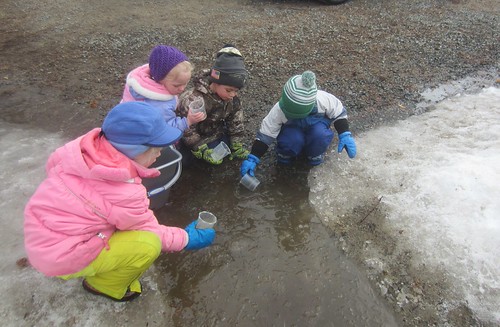
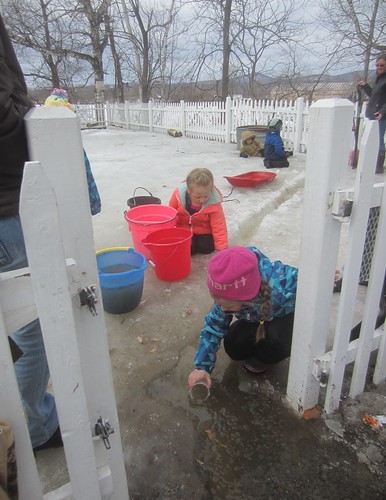
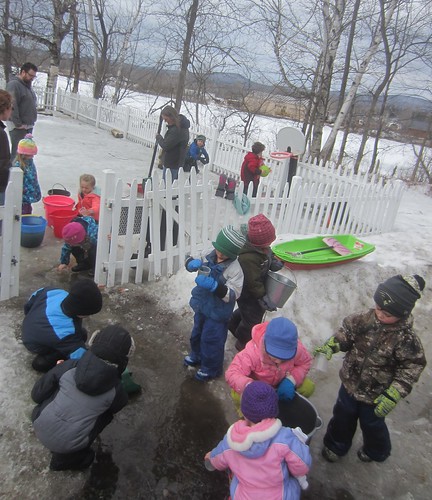
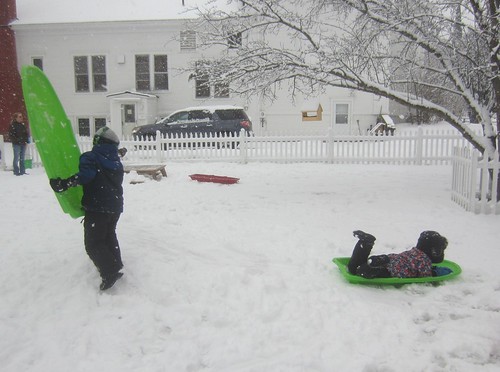

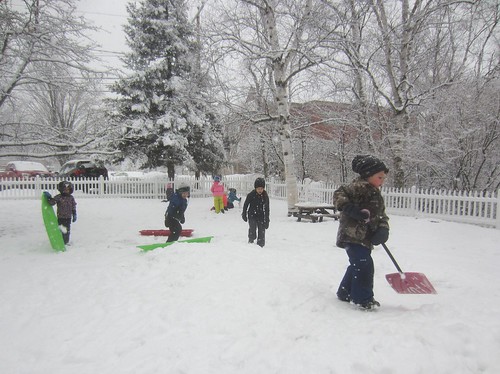
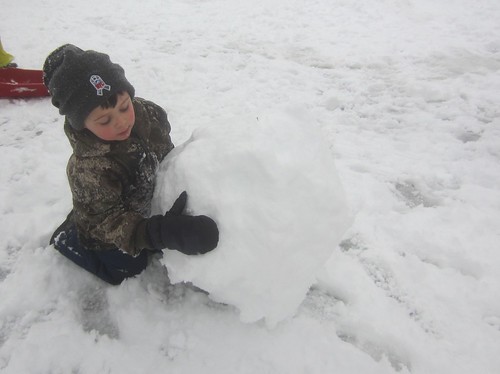
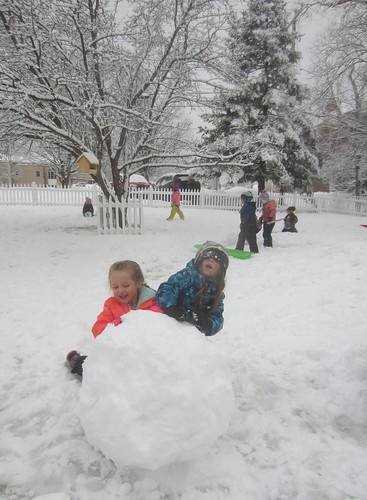
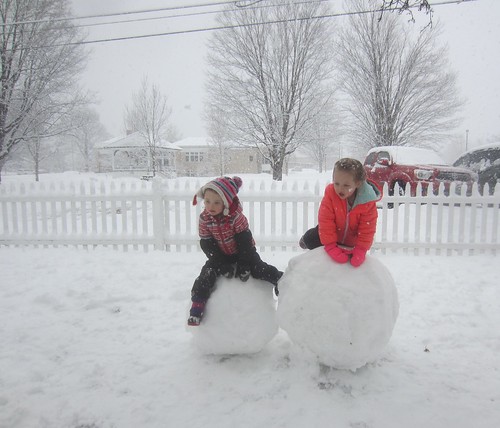 On Monday we looked at some beautiful marbled paper. We then made our own by carefully dropping inks into pans of water, then carefully pulling and swirling the colors, moving slowly to keep the colors separated. We then gently laid our papers on top before slowly picking them up and placing them on the drying rack.
On Monday we looked at some beautiful marbled paper. We then made our own by carefully dropping inks into pans of water, then carefully pulling and swirling the colors, moving slowly to keep the colors separated. We then gently laid our papers on top before slowly picking them up and placing them on the drying rack.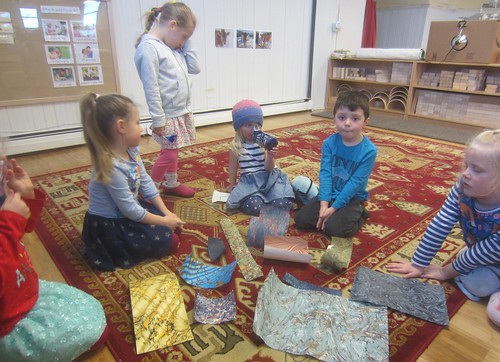
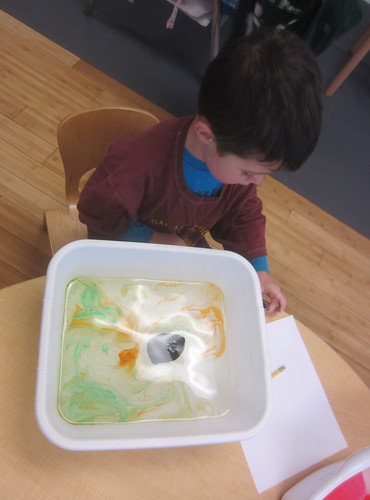
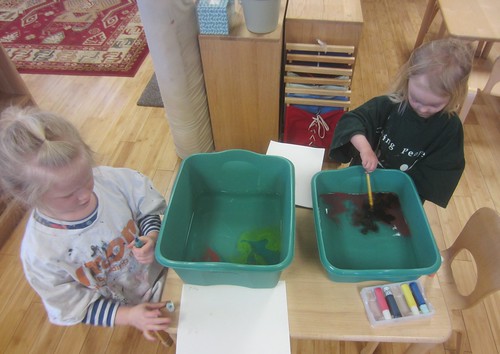
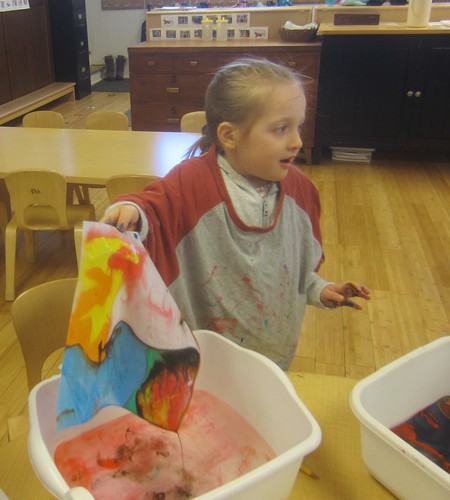 We read several stories about friendship, kindness, and handling frustrations, which initiated important conversations about the ways we communicate with and treat others and how we handle challenging situations. We read Wanted: Best Friend, Words Are Not for Hurting, Be Kind, and I Can Handle It. “You are not my friend” is a common phrase young children use to express their displeasure, but it is a hurtful phrase. The children shared other ways to communicate when they are upset that are kind and informative, such as “I did not like it when you took my puppet. It made me sad. Please give it back.”
We read several stories about friendship, kindness, and handling frustrations, which initiated important conversations about the ways we communicate with and treat others and how we handle challenging situations. We read Wanted: Best Friend, Words Are Not for Hurting, Be Kind, and I Can Handle It. “You are not my friend” is a common phrase young children use to express their displeasure, but it is a hurtful phrase. The children shared other ways to communicate when they are upset that are kind and informative, such as “I did not like it when you took my puppet. It made me sad. Please give it back.”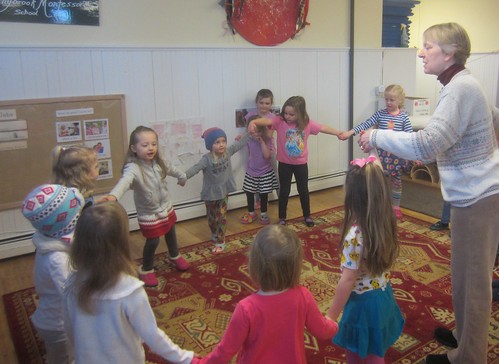
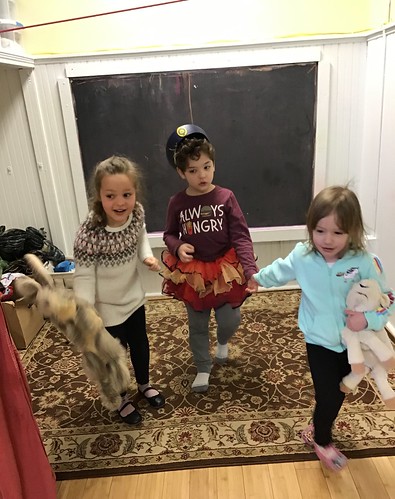
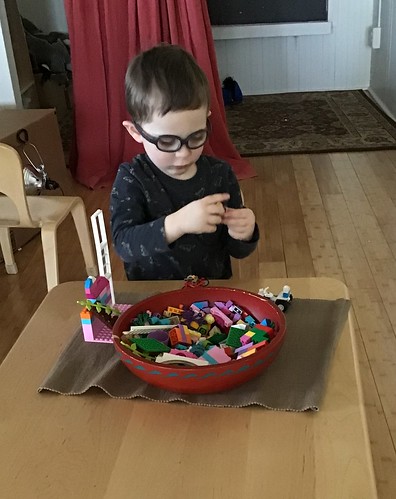
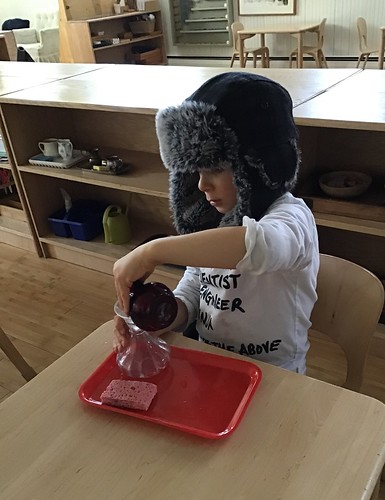
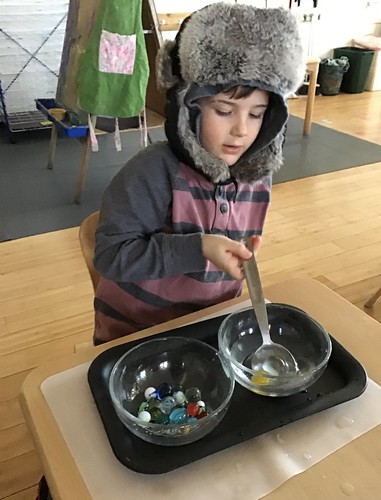
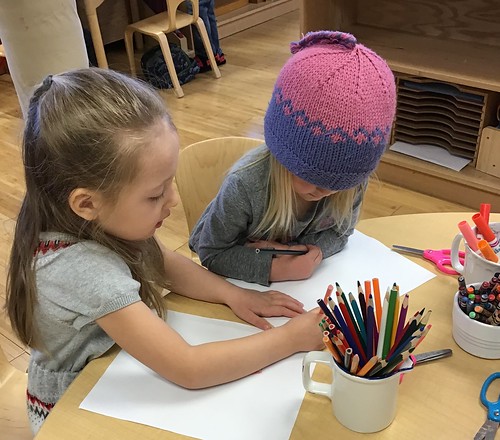
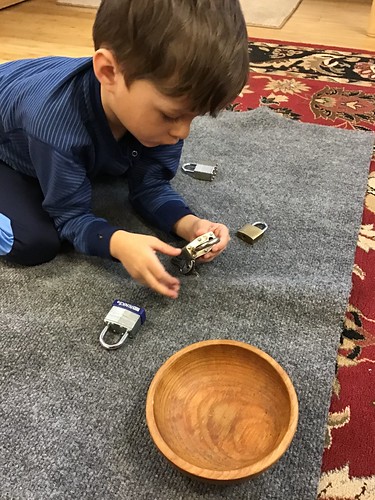

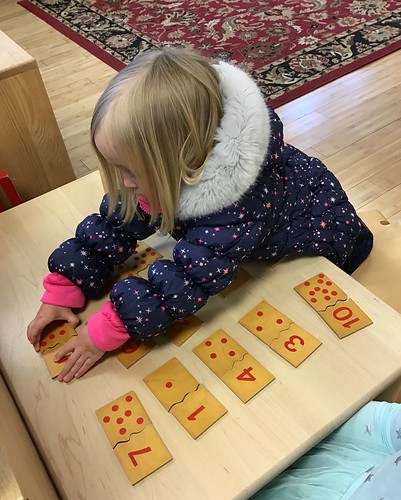
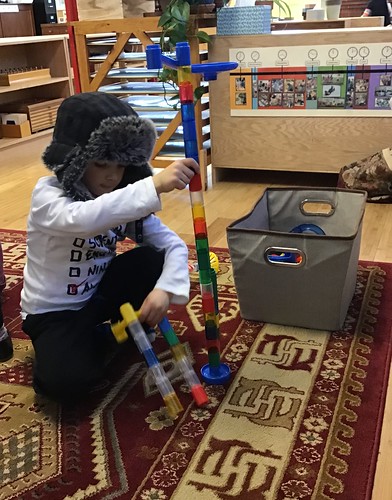
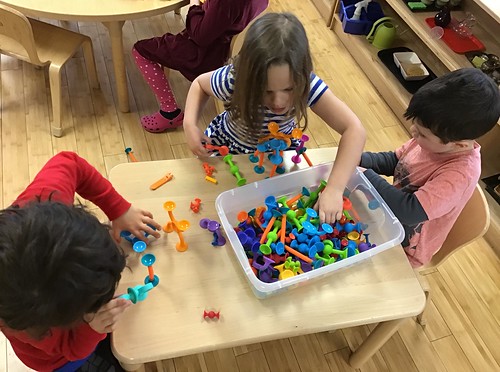

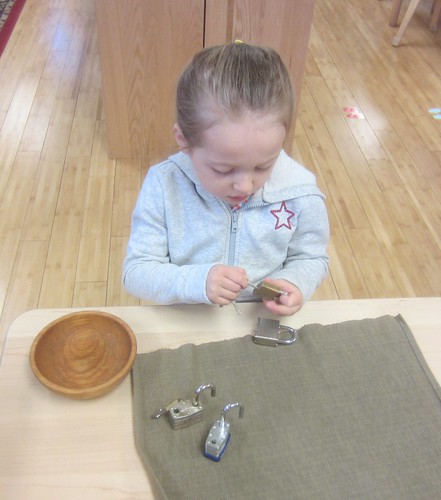
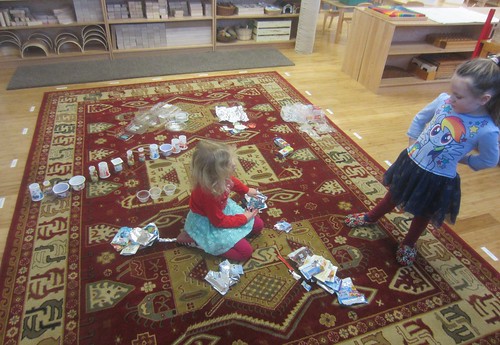

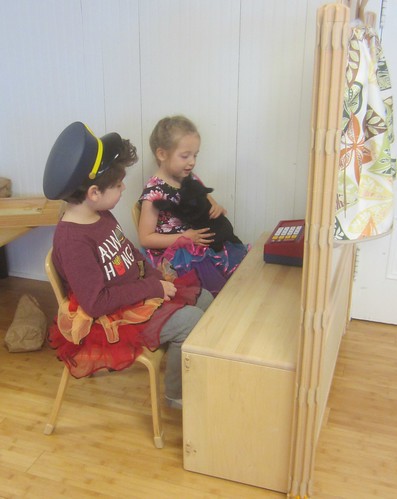
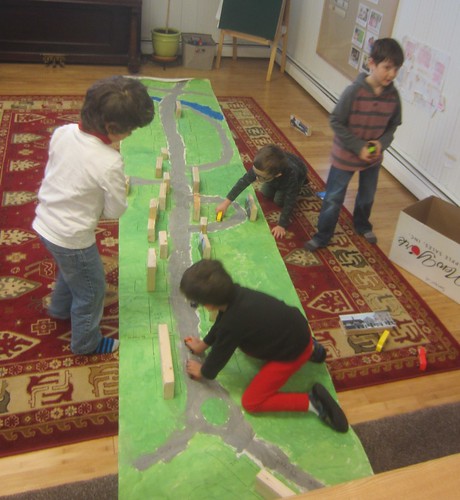
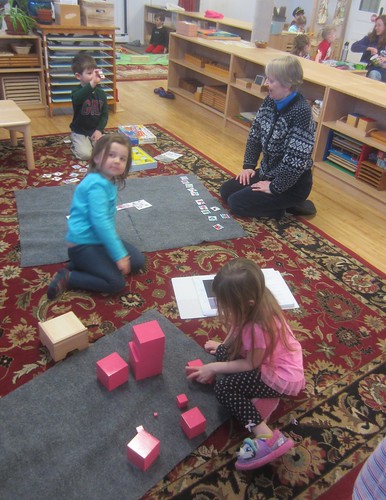

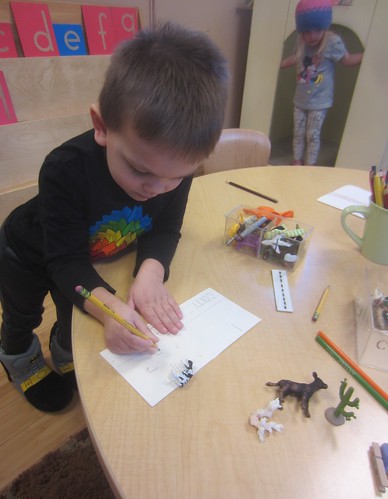



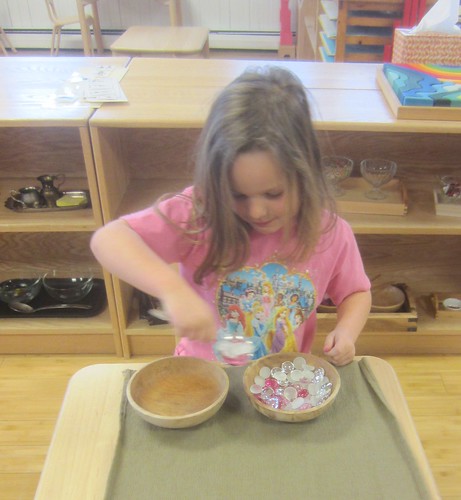
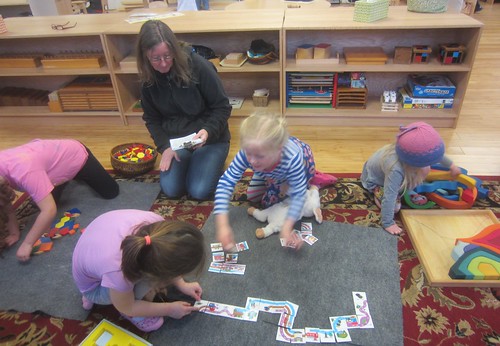


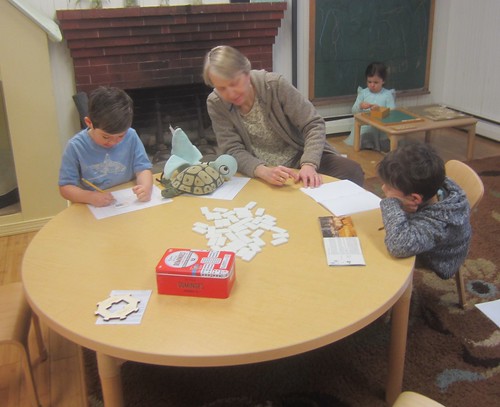

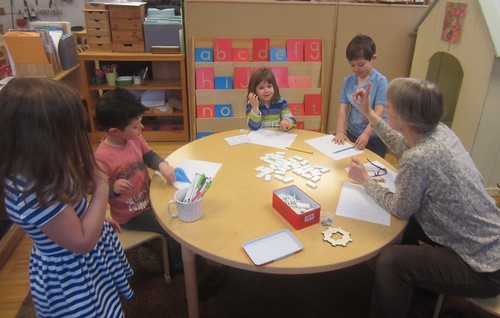
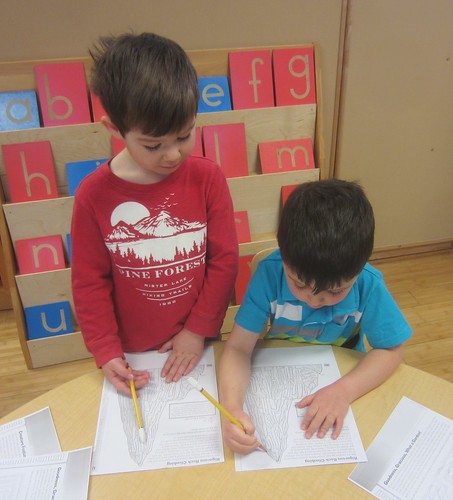 Believe in Books sent Katie, A.O., and Cat in the Hat to visit on Tuesday. A.O. read us two stories from the Sneetches book, The Zax and What Was I Afraid Of? After the stories everyone had a chance to greet the Cat in the Hat with a hug, high five, fist bump, or wave, then chose a book to take home. We posed for a photo with The Cat before he, Katie, and A.O. returned to the Theater in the Woods.
Believe in Books sent Katie, A.O., and Cat in the Hat to visit on Tuesday. A.O. read us two stories from the Sneetches book, The Zax and What Was I Afraid Of? After the stories everyone had a chance to greet the Cat in the Hat with a hug, high five, fist bump, or wave, then chose a book to take home. We posed for a photo with The Cat before he, Katie, and A.O. returned to the Theater in the Woods.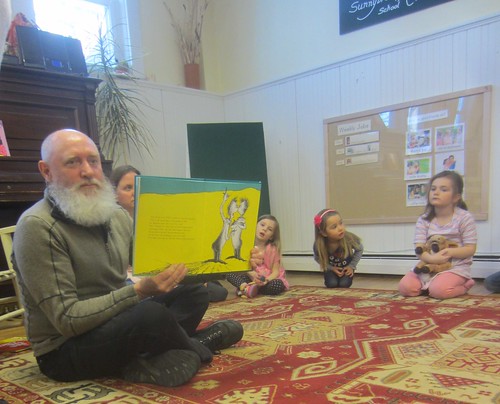
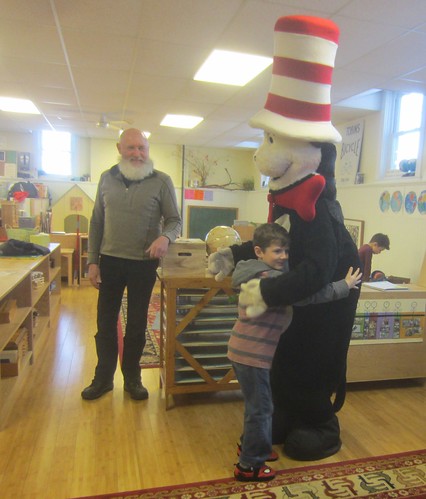
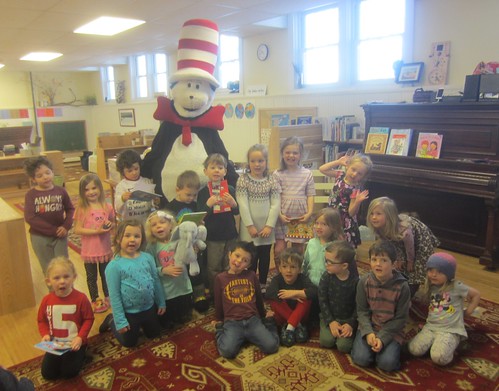 Mr. Bond brought out everyone’s boards for their bird houses and worked with them to measure and mark the lines for cutting. Each child worked to set up the layout of their board, which Mr. Bond took home to cut in preparation for assembly, which will begin next week.
Mr. Bond brought out everyone’s boards for their bird houses and worked with them to measure and mark the lines for cutting. Each child worked to set up the layout of their board, which Mr. Bond took home to cut in preparation for assembly, which will begin next week.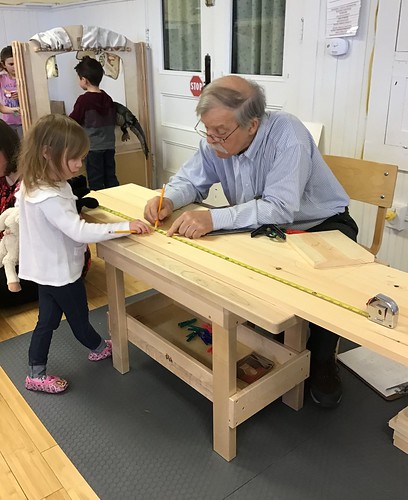

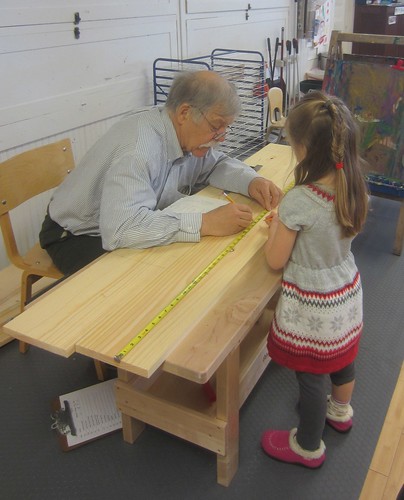
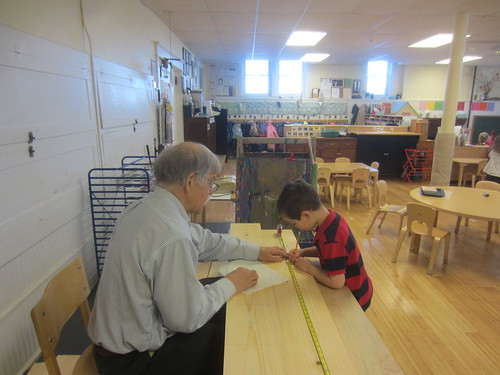 The Shannon family will be bringing fertilized eggs to our classroom next week with an incubator. We will monitor and observe them until they hatch in 21 days. On Wednesday they brought eggs from their hens for us to examine and a catalog showing various breeds of chickens. The catalog listed the names and showed a photos of the adult chickens, the chicks, and the eggs. It also told whether the breed was used for eggs, meat, or both, and if it is heat and/or cold temperature hardy. We found the chicken breeds that laid the eggs in the carton, Golden Laced Wyanotte, Buff Orpington, and White Leghorn, and used the photos to determine which chickens laid which eggs, according to color; light brown, dark brown, or white. We then opened an egg to find the germ spot, yolk, and albumen. We looked at the germ spot to see if it had been fertilized, and it appeared to be, as it had a ring around it.
The Shannon family will be bringing fertilized eggs to our classroom next week with an incubator. We will monitor and observe them until they hatch in 21 days. On Wednesday they brought eggs from their hens for us to examine and a catalog showing various breeds of chickens. The catalog listed the names and showed a photos of the adult chickens, the chicks, and the eggs. It also told whether the breed was used for eggs, meat, or both, and if it is heat and/or cold temperature hardy. We found the chicken breeds that laid the eggs in the carton, Golden Laced Wyanotte, Buff Orpington, and White Leghorn, and used the photos to determine which chickens laid which eggs, according to color; light brown, dark brown, or white. We then opened an egg to find the germ spot, yolk, and albumen. We looked at the germ spot to see if it had been fertilized, and it appeared to be, as it had a ring around it.
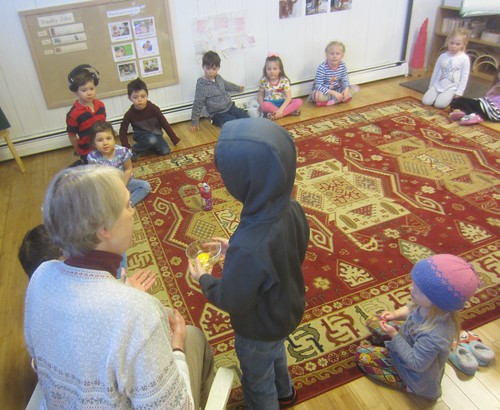 Zeanny continued teaching about fruit and healthy eating during health and Spanish on Thursday. We watched and sang along to the fruit song, then she read La oruga muy hambrienta (The Very Hungry Caterpillar).
Zeanny continued teaching about fruit and healthy eating during health and Spanish on Thursday. We watched and sang along to the fruit song, then she read La oruga muy hambrienta (The Very Hungry Caterpillar). Susan once again brought our her piccolo, fife, alto recorder, and flute. She reminded us that the longer the pipe, the lower the pitch. She played each one and asked us to identify which had the lowest pitch and which had the highest, first trying to guess by looking at the lengths of the pipes. She introduced some new woodwind instruments; a slide whistle, a train whistle, a flutophone, a harmonica, and a kazoo. To wrap up music she brought out some boom whackers, which make their sound when the air passes through them when they whack something. First the children organized them from longest to shortest, then everyone took a turn whacking them on things; shelves, the pole, the floor, chairs, tables, our bodies, and the wall. We found that they made the best sound when we whacked them on our bodies, but we had fun testing them out on most anything we could find!
Susan once again brought our her piccolo, fife, alto recorder, and flute. She reminded us that the longer the pipe, the lower the pitch. She played each one and asked us to identify which had the lowest pitch and which had the highest, first trying to guess by looking at the lengths of the pipes. She introduced some new woodwind instruments; a slide whistle, a train whistle, a flutophone, a harmonica, and a kazoo. To wrap up music she brought out some boom whackers, which make their sound when the air passes through them when they whack something. First the children organized them from longest to shortest, then everyone took a turn whacking them on things; shelves, the pole, the floor, chairs, tables, our bodies, and the wall. We found that they made the best sound when we whacked them on our bodies, but we had fun testing them out on most anything we could find!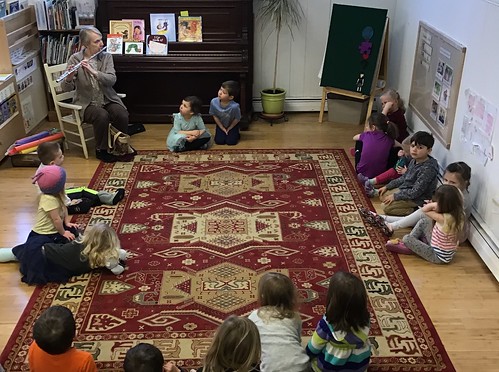
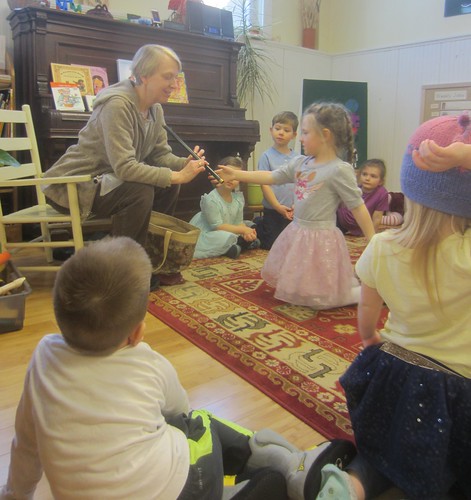
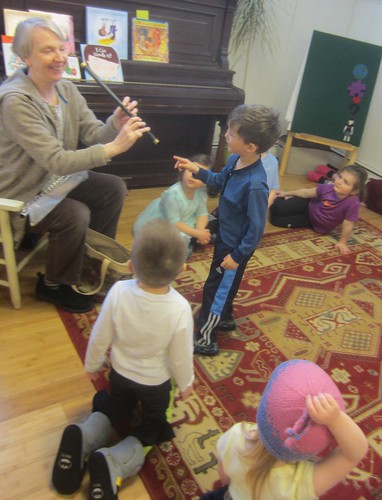
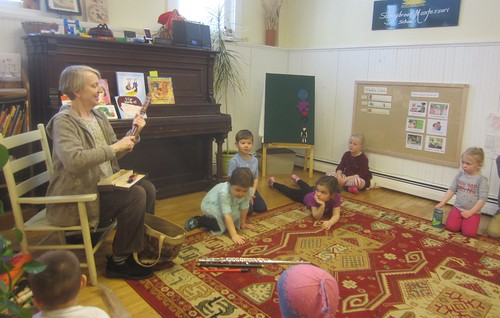

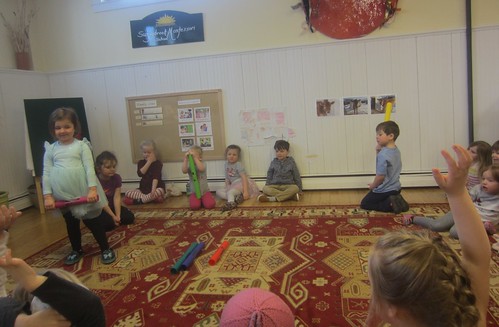

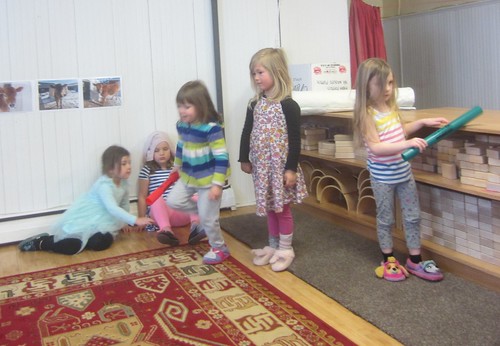

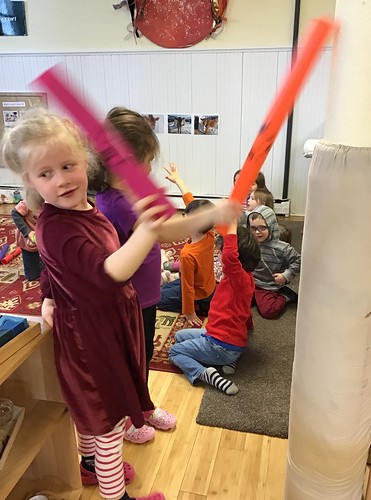
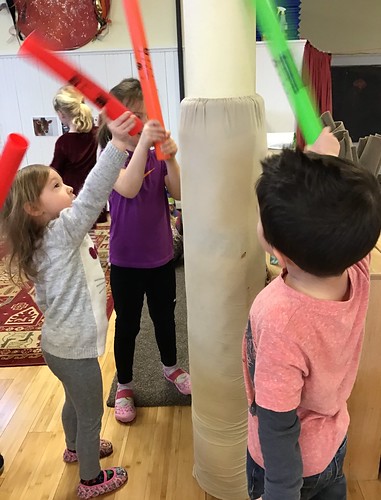
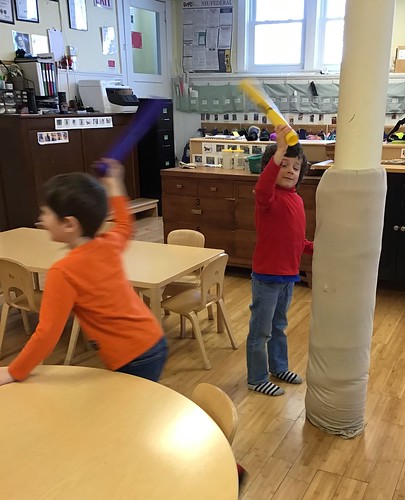 Friday students read Who Sank the Boat? then did a float or sink experiment. To begin, we determined which materials we were working with and made labels for each one; wood, metal, glass, plastic, rubber, and other. The children then took turns picking items, determining what they were made of, and hypothesizing whether they would sink or float before testing our hypothesis. We discovered that all things wood floated, and even when we tried we could not make them sink. We found that glass sank unless it had air trapped inside, and that all metal sank. We were able to make metal items float if they were a particular shape, which spread their weight over the surface of the water. We will use this information next week when we get busy building boats.
Friday students read Who Sank the Boat? then did a float or sink experiment. To begin, we determined which materials we were working with and made labels for each one; wood, metal, glass, plastic, rubber, and other. The children then took turns picking items, determining what they were made of, and hypothesizing whether they would sink or float before testing our hypothesis. We discovered that all things wood floated, and even when we tried we could not make them sink. We found that glass sank unless it had air trapped inside, and that all metal sank. We were able to make metal items float if they were a particular shape, which spread their weight over the surface of the water. We will use this information next week when we get busy building boats.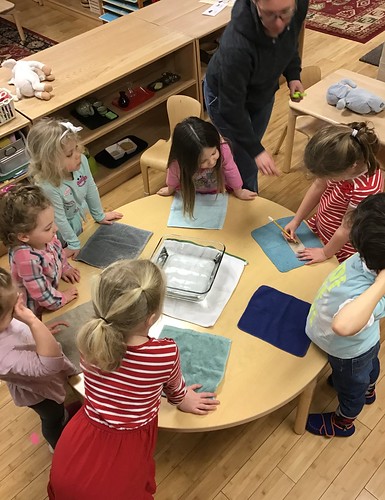
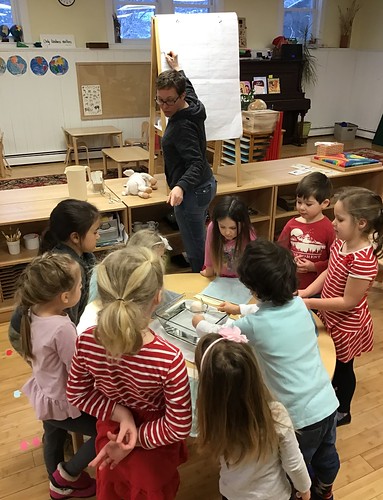

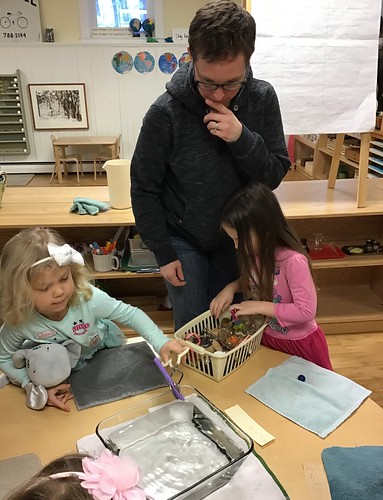
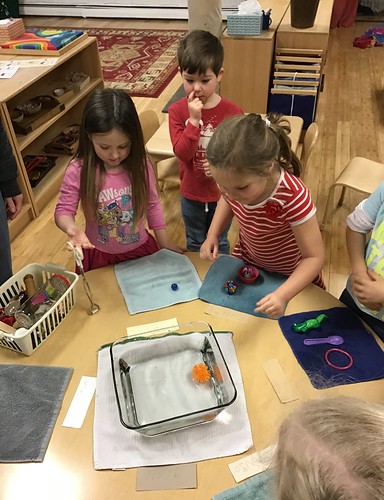
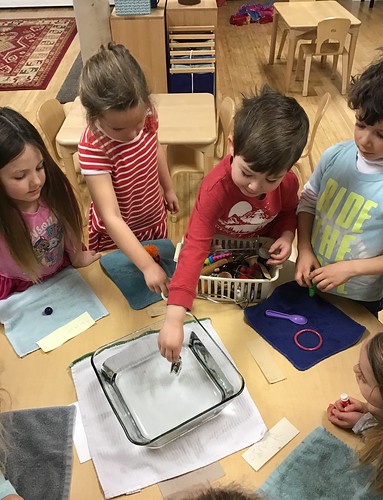
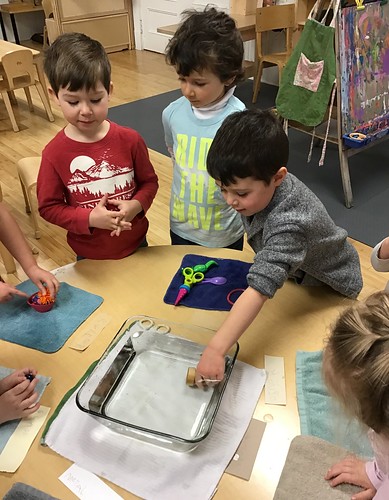

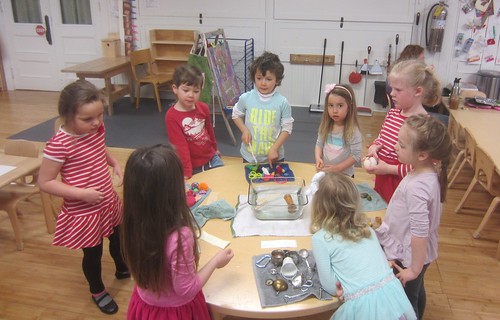
Friends
March 22, 2019
